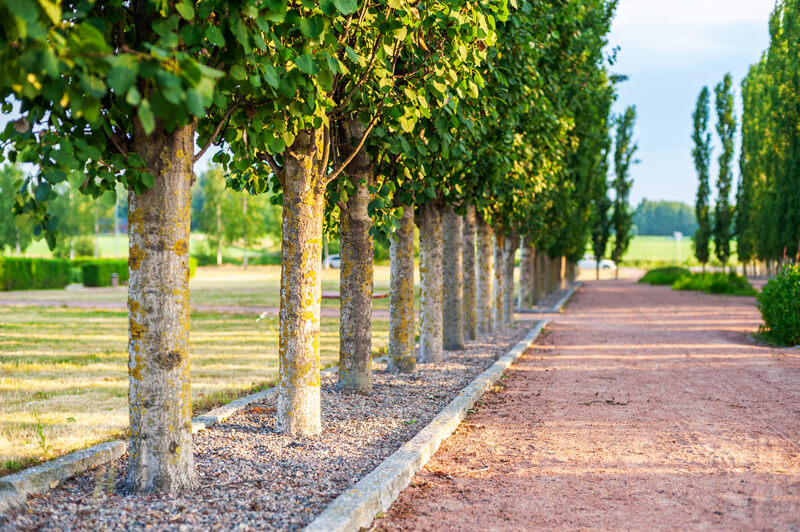Design competition creates a special park
“Governor Park” between the roads Viikintie, Pihlajamäentie, Viikinkaari and Pasteurinkatu features a very special design.
In 2002 the City of Helsinki, Senate Properties and the University of Helsinki organised an invitational design competition for the park together with the Finnish Association of Landscape Architects. The competition was won by landscape architect Soile Heikkinen with her proposal entitled “Galleries” (Galleriat).
The park was a challenge to design, as some of the area was part of Viikki Manor and other parts were abandoned fields, old roads and railway embankments. The park is bordered by busy roads and right next to the busiest shopping centre in Viikki. The park was designed for recreational use by students and staff from the university and by local residents, and it is also an important access route across the neighbourhood. The park can also be used by the university for educational purposes.
The design connects the historic Viikin Latokartano farm from the 1500s to a modern science park in an intriguing way. The old stone wall that borders the garden to the east and north has been continued along the entire side of the park along the Pihlajanmäentie road. The wall helps define the area of the park within the transformed environment.
Plant galleries and a manor house garden
The park is divided into two sections: the area around Viikki Manor and the modern park to the south. A pedestrian and bicycle path runs through the park between the two sections. The path is lined by small squares where people can sit and relax. They can also be used for small events. Viewed from afar, the park seems to be straightforward and clearly laid out, but upon entering the park it proves to be very rich and stimulating.
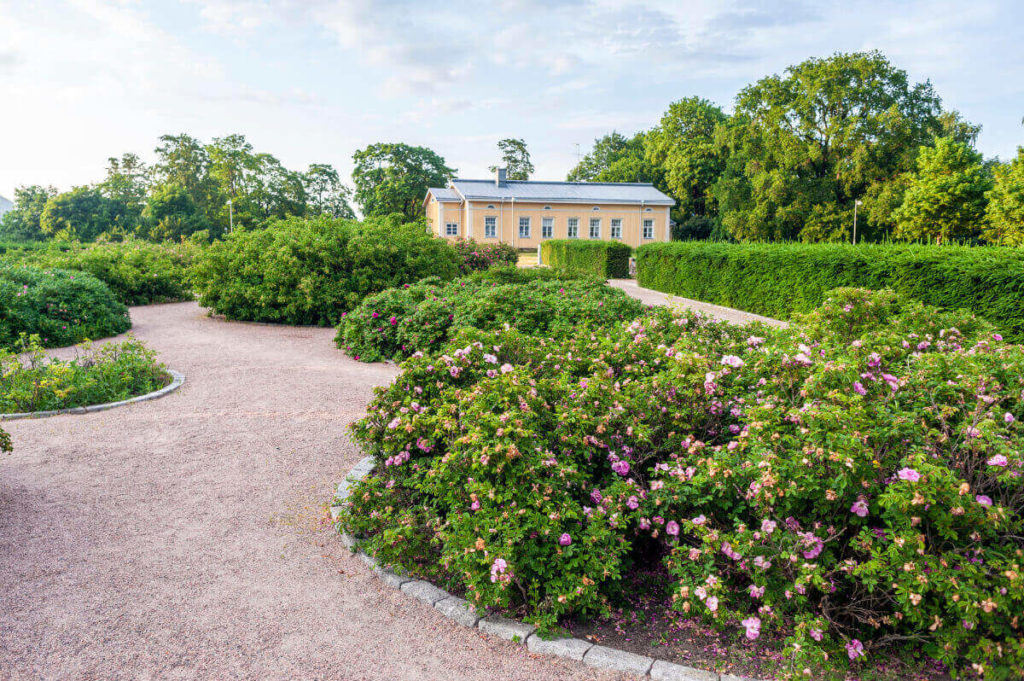
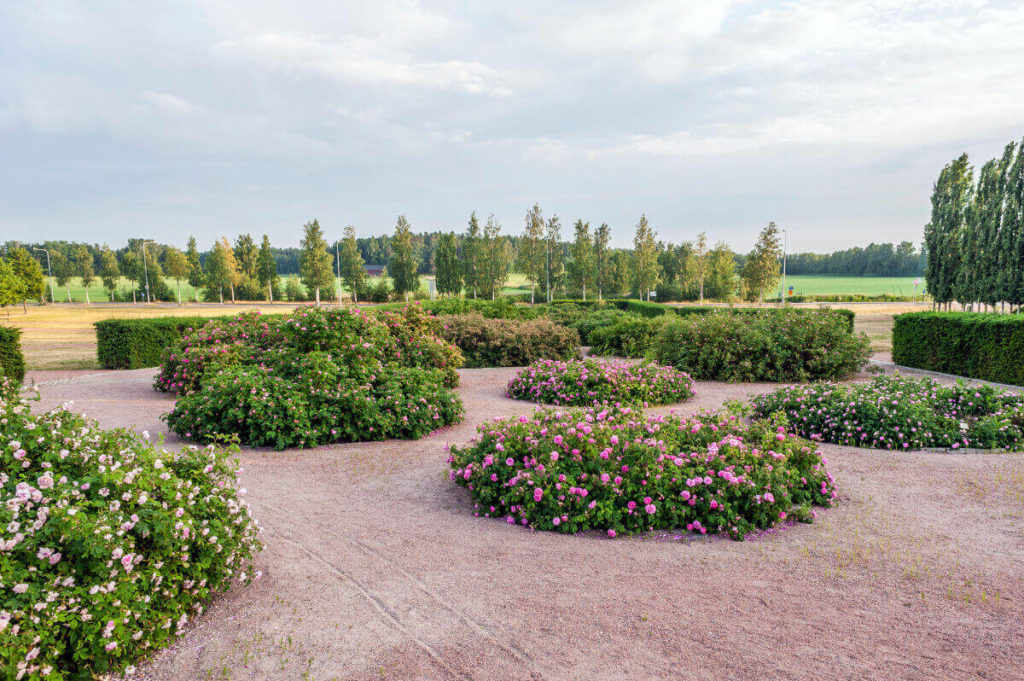
The southern section of the park features impressive tree-lined “galleries” that are laid out in a fan-like pattern and afford views to the open landscape of Viikki to the south. The trees that line the galleries are reminiscent of the traditional tree-lined alleys outside manor houses.
The three galleries form room-like exhibition spaces that contain model gardens created by the university. The Rose Gallery is lined by trimmed spruce trees and contains 32 rose species that are part of the university’s rose garden collection. The Aspen Gallery is lined by aspen trees and contains perennials and ornamental grasses. The Maple Gallery is lined by maples and contains nine different types of shrubs that can be viewed by walking along a wooden path. The species here include various Filipendula, hydrangea (Hydrangea paniculata ‘Mustila’), chokeberries (Aronia arbutifolia), winged euonymus (Euonymus alatus), Bell’s honeysuckle (Lonicera x bella ‘Dropmore’), Japanese azalea (Rhododendron japonicum), southern bush honeysuckle (Diervilla sessilifolia) and black stem dogwood (Cornus alba ‘Kesselringii’).
The plants in the galleries have been arranged in small islands, each with its own plant species or variety. The plants were selected together with the university to create model gardens that are suitable for educational purposes. They also serve as model gardens for the general public, supplementing the gardens at nearby Gardenia.
Between the galleries are lawns where one can freely relax or sit on the benches. In springtime flower bulbs add colourful stripes on the lawns. The main path that crosses the park is already lighted, and when the trees lining the galleries have reached their full height, they too will be illuminated from inside. This will create the effect of twinkling spaces when seen from afar.
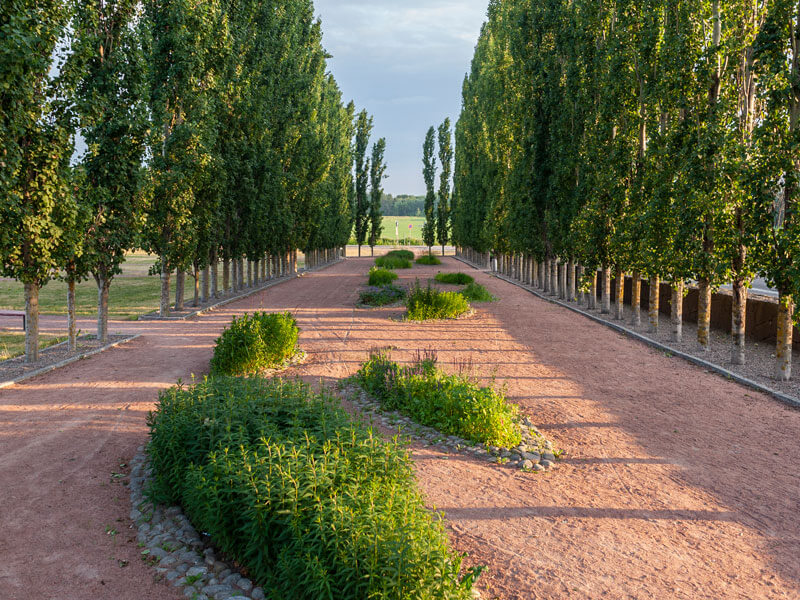
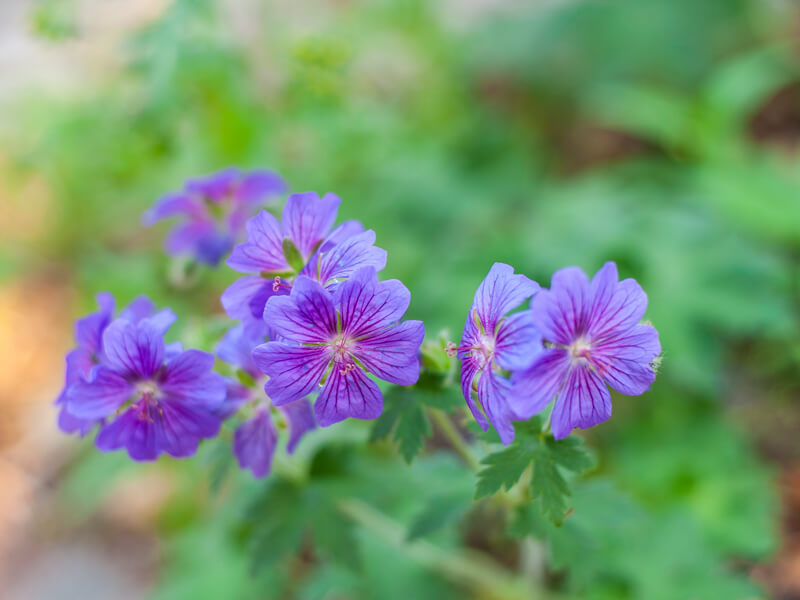
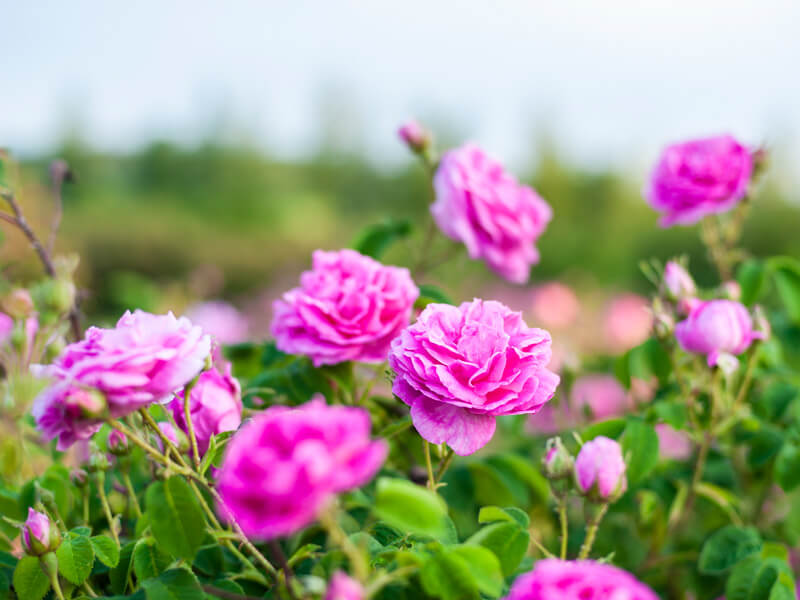
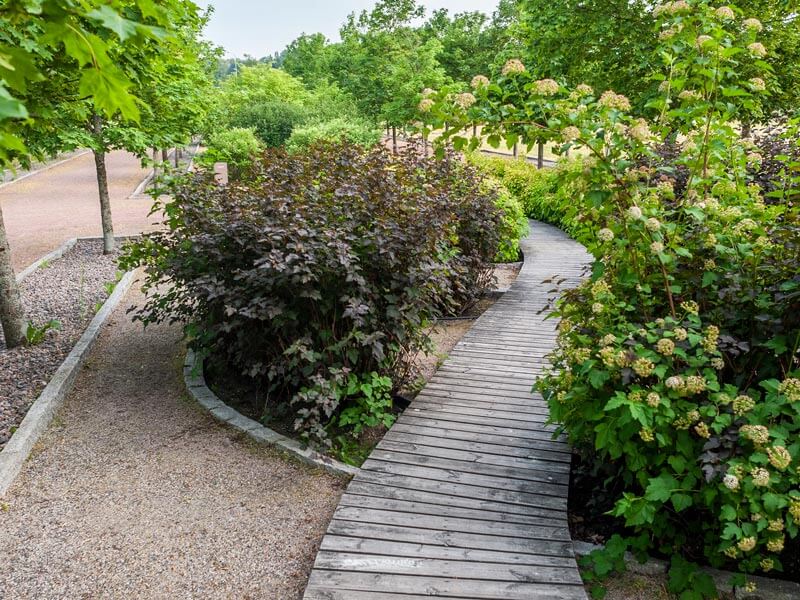
The historic manor house garden has not yet undergone a complete renovation. The idea is to simplify the layout of the garden, restore the original plants and replace old trees with new ones. Flowerbeds with old perennial varieties will be planted around the main building and the old house. New fruit trees will also be planted on the east and west sides of the main building as reminders of the past. A fine old oak tree grows by the southeast corner of the main building under which a summer terrace will be built for the restaurant.
The park opened to the public at 4:15pm on 14 November 2008 as part of the grand finale of the “Green Year” (Vihervuosi) campaign. The opening ceremonies included a light installation by artist Teemu Nurmelin and a fire performance. Soile Heikkinen, the designer of the park, also presented the project to the public.
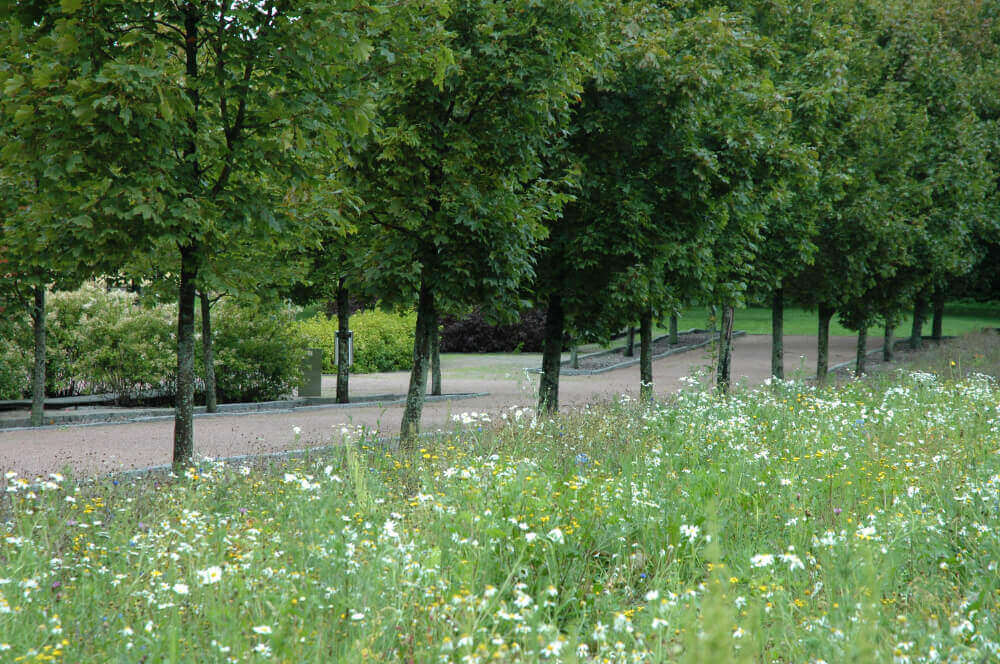
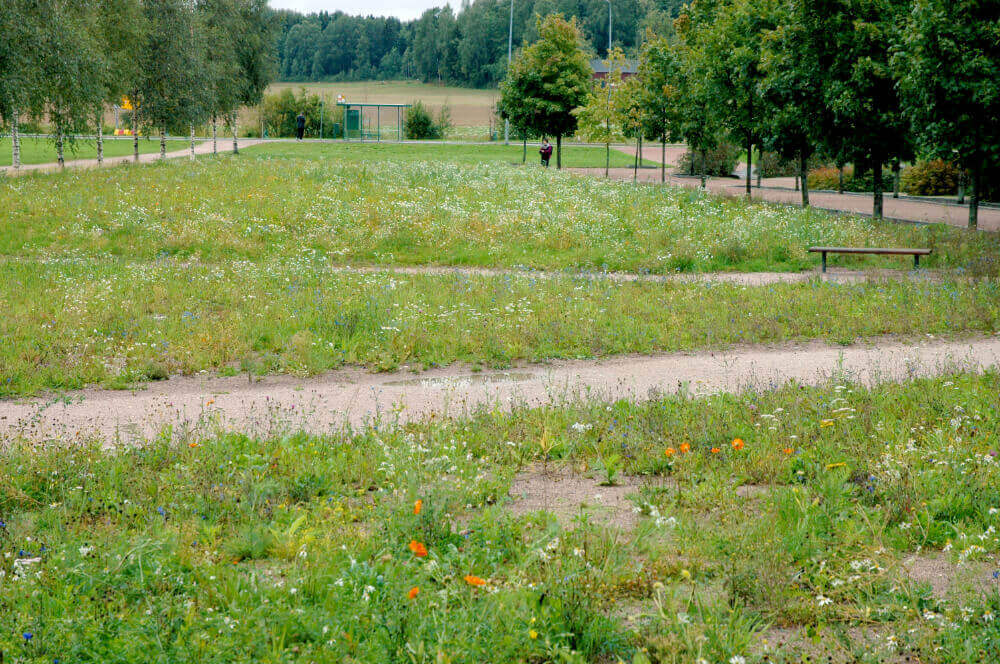
OmaStadi meadow
A meadow was built on the eastern side of Maaherranpuisto park as a so-called OmaStadi 2019–2020 project. OmaStadi is a participatory budgeting project for Helsinki residents in which residents can propose improvements to the City and its operations. The proposals are then voted on and the winning proposals are implemented. One such winner was the proposal Transforming lawns into flower fields and urban plantations – helping the climate, pollinators and the Baltic Sea.
The lawn area on the eastern side of Maaherranpuisto park had been used as a depot for a Jokeri Light Rail worksite and was in need of renovation. This made it an excellent site for the meadow trial. The loamy and depressed soil was not suitable as a growing medium for meadow vegetation as it was. The original grass vegetation was in poor condition and was peeled off, after which the soil was reshaped. Drainage ditches were also built in the wettest area. The City’s own recycled and sieved soil materials were spread over the meadow area being built and impoverished with sand that had been collected from the sandboxes of the City’s parks as their sand was replaced.
Three types of meadows were built: a dry flower meadow meadow, a bellflower meadow and a butterfly meadow. Each meadow was given a different growing medium and a seed mix consisting of Finnish meadow plants. The seed mixes contained both annual and perennial plants. The seeds were sown in November 2020. A sign providing information about the meadow project and the OmaStadi project was placed by the meadow.
Northernmost section – Dry flower meadow 417 m2
The slope meadow is the smallest and driest of the Maaherranpuisto park meadows. Some of the plant species sown are typical meadow plants, while others thrive in damper conditions as well. The range of species is being allowed to develop to become appropriate for the conditions. The objective is to achieve a low-growing and diverse, flowering meadow.
Middle section – Bellflower meadow 620 m2
The Bellflower meadow area features plenty of flowering meadow plants, particularly different bellflowers (Campanula sp.). To differentiate it from its neighbouring meadows, its range of colours emphasises shades of blue and purple in its flowers. The objective is to achieve a medium tall growing and diverse, flowering meadow.
Southernmost section – Butterfly meadow 1,200 m2
The Butterfly meadow features plenty of flowering meadow plants favoured by pollinators, especially butterflies. The objective is to achieve a species-diverse medium tall to tall growing meadow that features plenty of flowers to attract butterflies.
It will take years for a visually impressive meadow with annual and perennial flowers to form, as well as plenty of manual work as undesired species, such as mugworts, the northern dock and invasive species, have to be weeded out. The first growing summer2021 required a total of 110 hours of manual work. As the vegetation establishes itself, the maintenance work will become easier. The development of the meadow vegetation will be monitored to provide the City of Helsinki with experiential information about building and maintaining meadows.
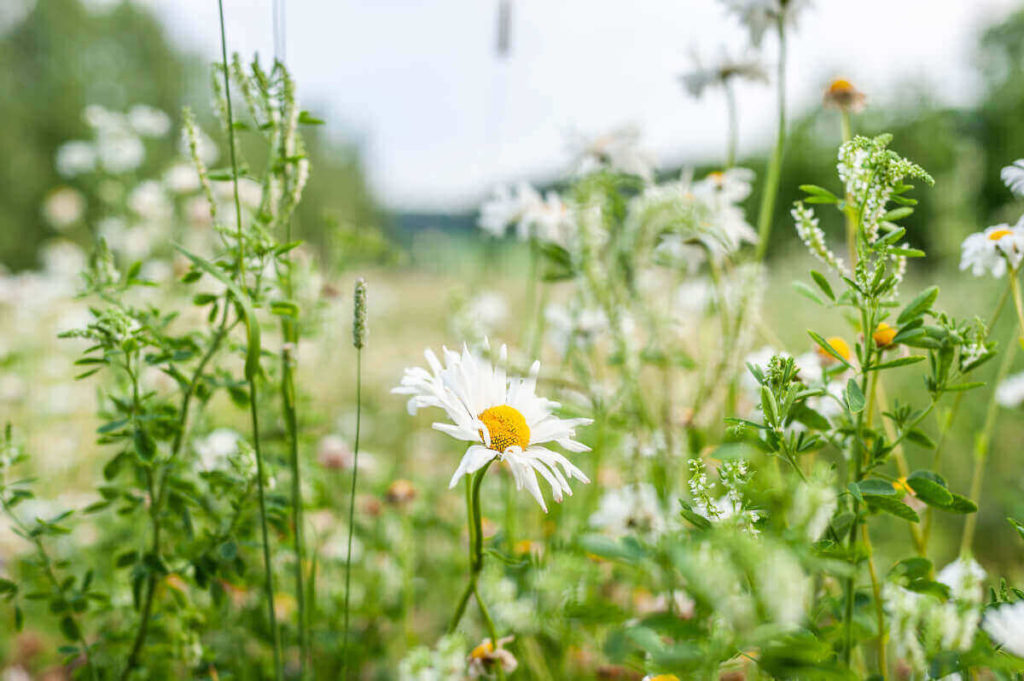
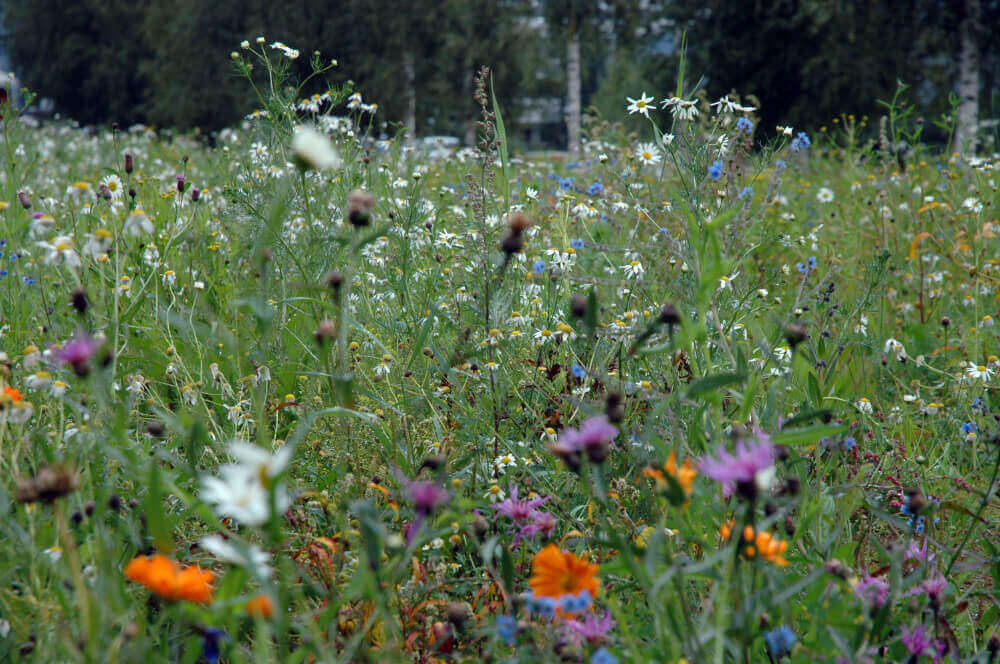
Lawns to meadows signpost
-
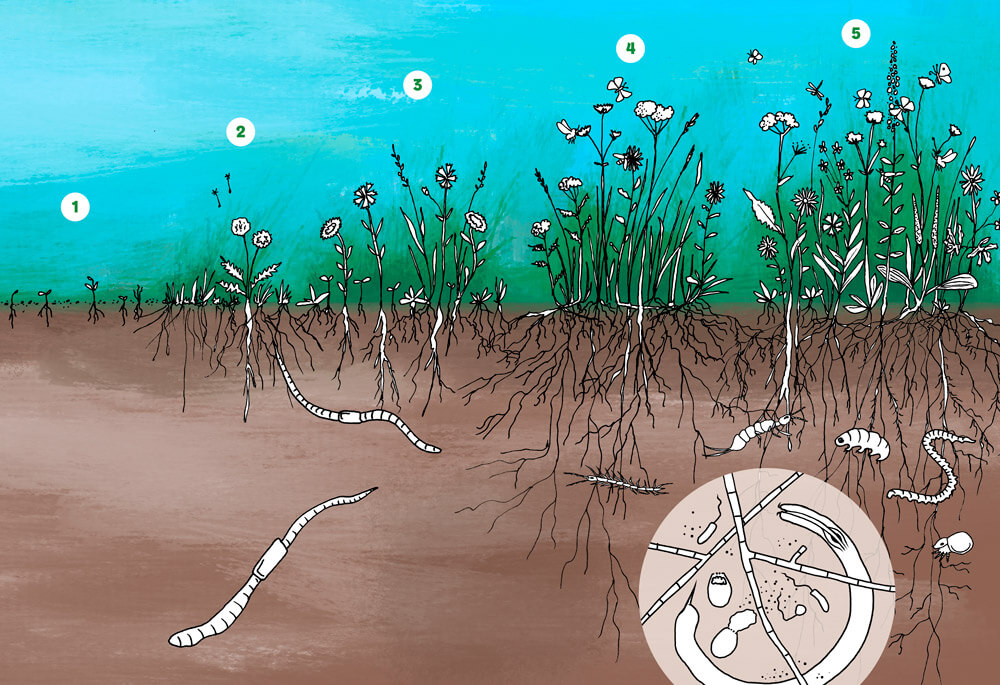
When you replace an old lawn with a meadow the vegetation in the area will start to change gradually. The seeds of some meadow plants may wait for favourable conditions in the soil for years.
The Nurmikot niityiksi (Lawns to meadows) project proposed by residents of Helsinki involves the City replacing little-used lawns with meadows. Diverse vegetation and healthy soil help the climate by binding carbon. They also reduce the strain on the water system and offer habitats for many species.
Illustration Vappu Ormio
